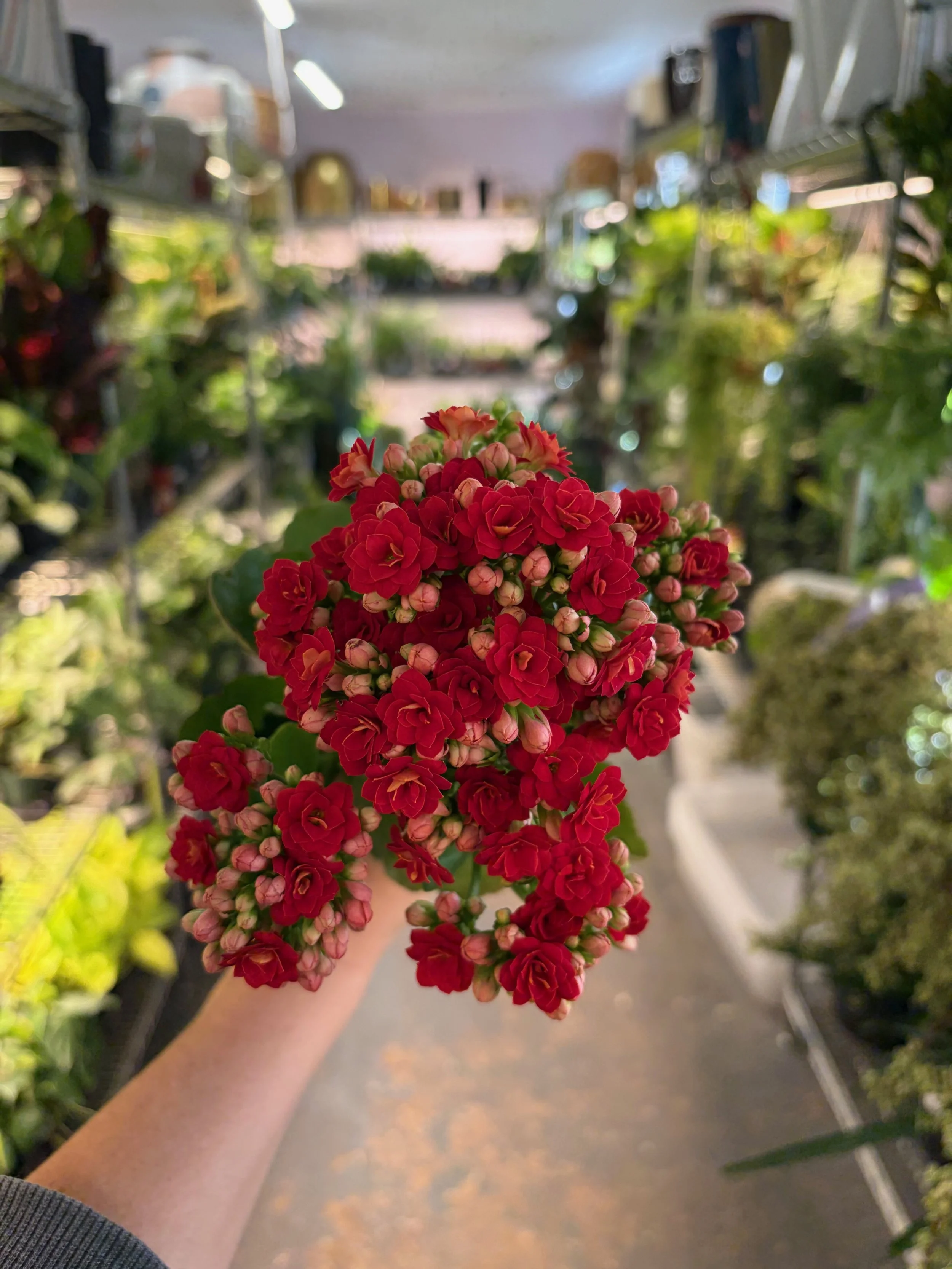November Plant of the Month: Calandiva
Meet Calandiva — the glow-up of the classic kalanchoe. For more than 100 years, kalanchoes kept things simple with their four-petaled blooms… until one Swedish grower stumbled upon a plant showing off with 32 petals in a batch of Kalanchoe blossfeldiana ‘Bromo’. This beautiful plant, later named ‘Leonardo,’ looked like a mini rose and became the star ancestor of a new line released in 2002: Calandiva. Fast forward to today, and the Calandiva family has blossomed into 13 vibrant color varieties, along with lines featuring bigger blooms, single blooms, and even outdoor friendly versions.
One of the best things about Calandiva this time of year? Their amazingly long-lasting flowers. Thanks to its succulent nature, the blooms can stick around for up to three months with minimal care. In summer, it’s happy soaking up full sun outdoors (just bring it in before the chill arrives). Starting in September, growers suggest dialing back the attention: skip the fertilizer and pinching, and give it a cozy dark room at night. Like all Kalanchoes, Calandiva is a “short-day” plant, so shorter evening light (under 12 hours) encourages it to set buds for winter.
Native to Africa and Asia, Calandivas love bright light, low humidity, and well-drained soil. They’re drought tolerant, easygoing, and great for containers, patios, or sunny indoor spots. Most stay between 6 inches and 2 feet tall, though some relatives can stretch taller. Just remember: while gorgeous, they’re toxic if eaten and can irritate skin, so keep pets and curious kiddos at a distance. Also, watch for mealybugs, scale, aphids, and the classic succulent enemy: overwatering.
And despite what some plant tags claim, you can propagate your Calandiva at home. The “no propagation” rule only applies to commercial growers — so feel free to snip a cutting or two for your own collection (just not for sale!)
Resources for this article include: Laidback Gardener & NCSU Plant Toolbox


